Updated 30 June 2019
For a while now I’ve been looking for the ideal portable speaker to use with my wind controllers. I’ve bought a few (LG FH2, Nyne Rebel, Sony SRS-X2, Harman Kardon Onyx Studio 4), and while they all have their nice points, none of them really met all my requirements.
I’ve been playing with some concert bands, and what I needed (apart from good sound quality) was:
- Reasonably small size (Sony, Harman Kardon)
- Good volume (LG)
- Ability to determine how much battery life is left (Nyne)
- 1/4″ input socket (LG)
So, I decided to build my own. It looks like this:
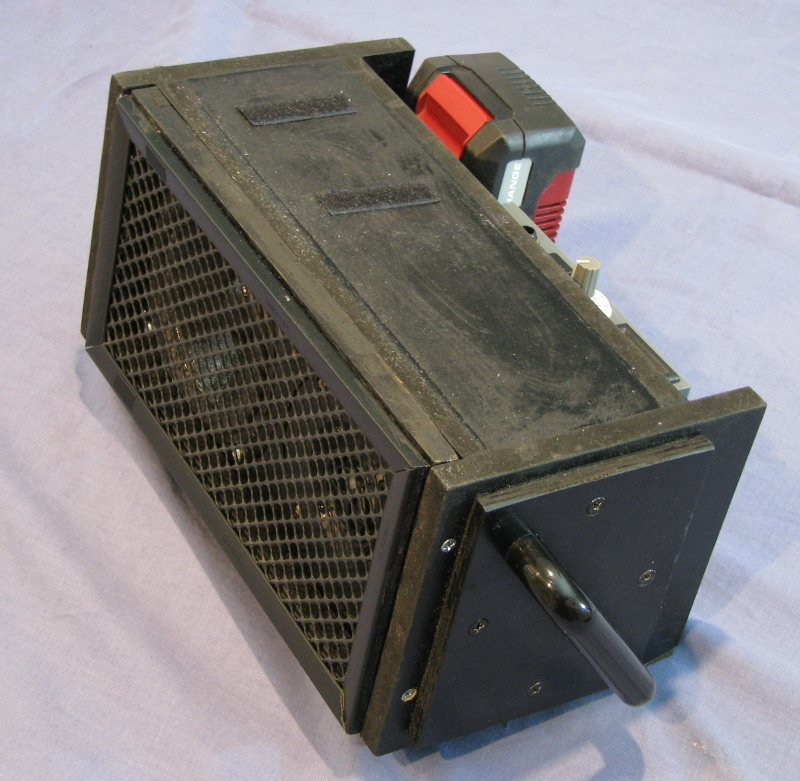
Components
The components I chose were:
Drivers
Dalton Audio DS135-8 5″ Designer Series woofer. It has an 8ohm impedance and can put out 50W over a wide range of frequencies that are well matched to the patches I play on my wind controllers (mainly orchestral instruments). I wasn’t sure if I would need a tweeter, as the woofer range was pretty good (up to 7KHz). I decided to include one as the required enclosure volume meant that there was room for it. I used a 25mm Titanium Dome tweeter.
Amplifier
I chose this amp:
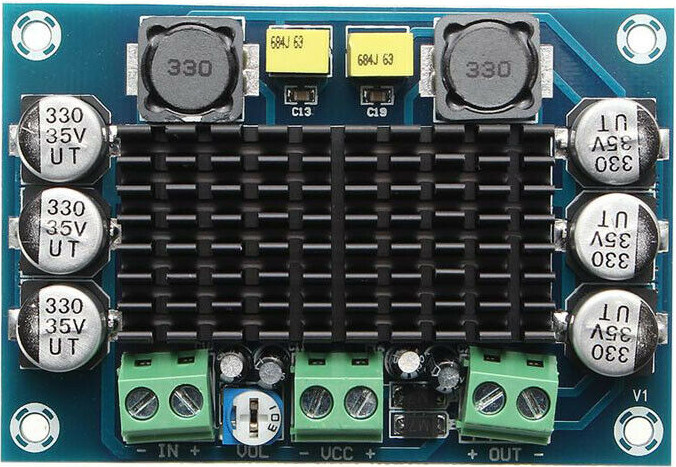
It’s a TPA3116D2 100W mono. There’s a review of it here. It gives good performance and will run on a range of voltages up to 24V. Because I added a tweeter, I included a off-the-shelf crossover set at 3800Hz:

Battery
I chose to use a Ozito 18V Li-ion drill battery. Why? Well, they offer the best storage per dollar, they recharge fast, and I have a few of them for my power tools! I decided that I didn’t want an on-board charger, as a single charge will last quite a while, and if I needed more, I can just take a spare battery.
Building the Enclosure
I decided to use a sealed enclosure, rather than a vented one. Sealed enclosures are typically smaller than vented ones, and I wasn’t after really deep notes (vented enclosures enhance the bass notes). The Dayton Audio site recommended 0.07cuft for a sealed box, which gave a f3 (the frequency where the response drops off at 3dB per octave) of 113Hz (that’s about A1 – the A just over an octave below middle C). The lowest parts I play often are the bass clarinet parts, which go down to E1 below that A, so to have the response drop off about that point wasn’t too bad.
I built the enclosure out of 12mm MDF, glued and screwed it together, and made a mesh cover for the drivers out of plastic gutter guard (!).
I 3-D printed a box for the electrics, which included a battery voltage display, the amp board, an on/off switch, the volume control (I had to un-solder the potentiometer on the amp-board to use a full-sized pot), and the audio in sockets. I also included a 5V adapter to run my Line6 wireless audio receiver.
I also 3-D printed a connector for the Ozito battery, and bolted it to the side of the enclosure.
Photos
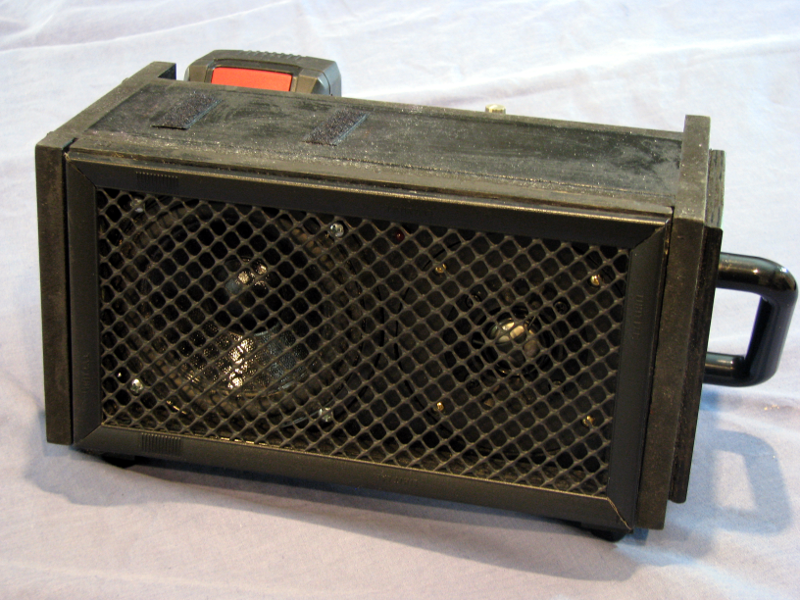

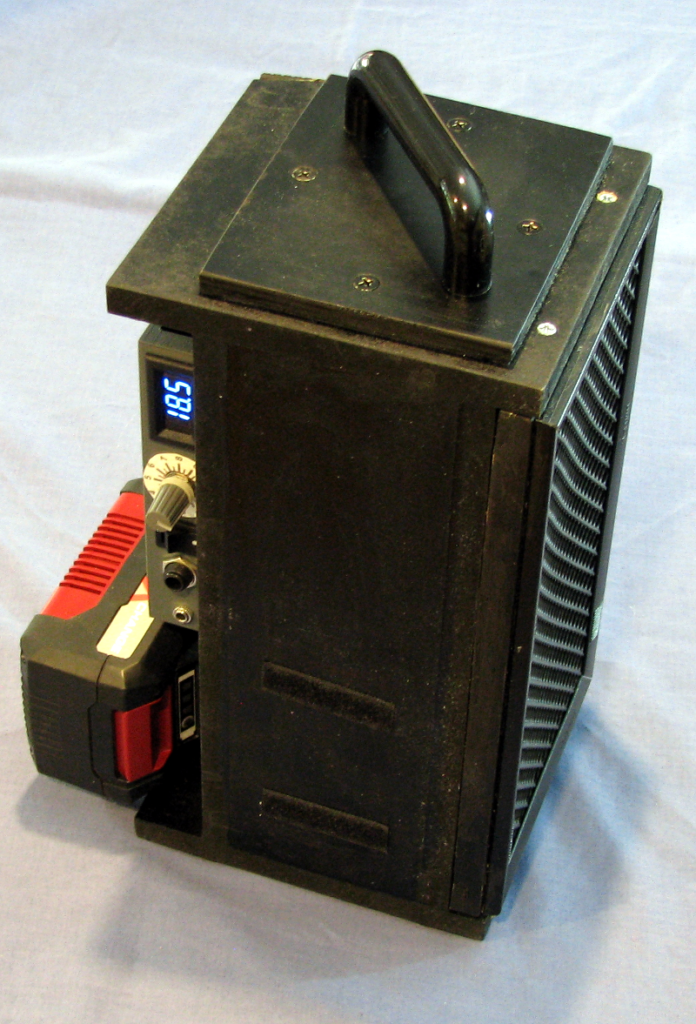
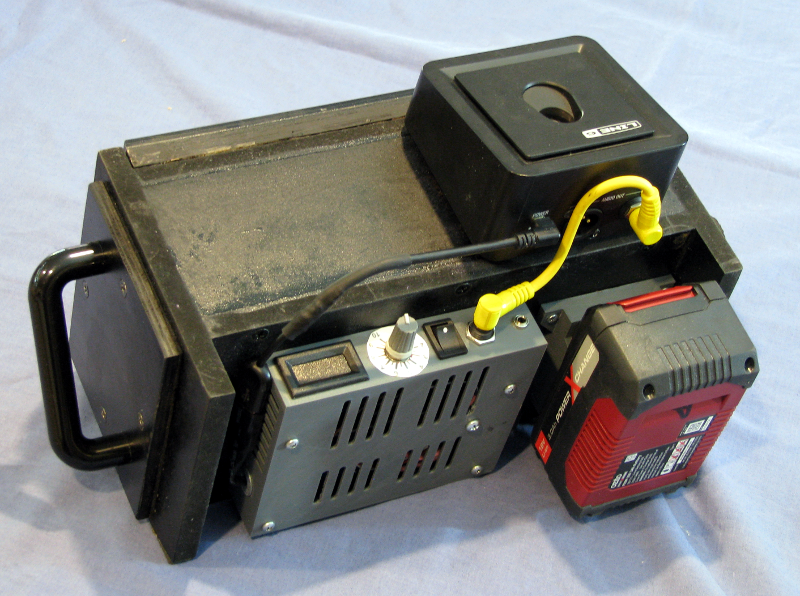
Results
I’m pretty happy with the sound – the speaker is well matched to the frequency ranges I use. It doesn’t have the deep bass that I get with my LG FH2 speaker, but that is three times the size and it’s vented. Nevertheless, the bass performance is still quite acceptable. The unit is not super light – it’s 4.6Kg with the battery and Line6 receiver attached, but it is easily carried. The volume is more than I need, and is easily louder than the equivalent orchestral instruments. I can get ~106dBA at 1m. The batteries re-charge in 20 minutes. I don’t know about battery life yet, but my calculations say it will be 4+ hours, and with the ability to take a spare battery for quick changes, battery life is not an issue.